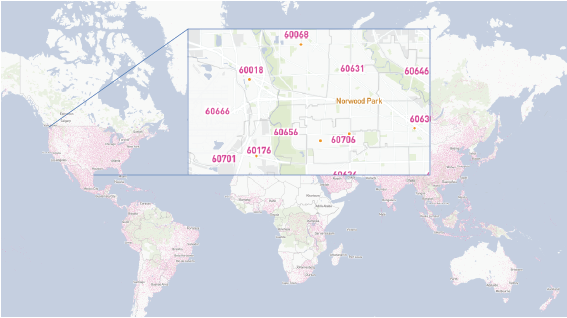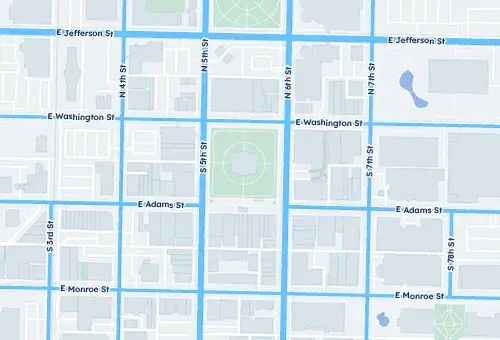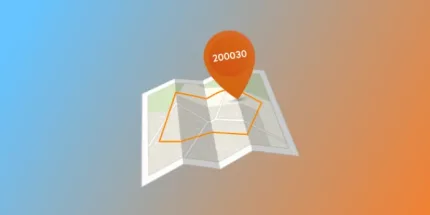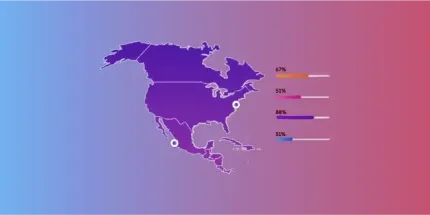World Zip Code Boundary Maps
Empower your location-based operations, applications and zip code maps with edge-matched polygons
124 of the Fortune 500 rely on our boundary data




PRODUCT HIGHLIGHTS
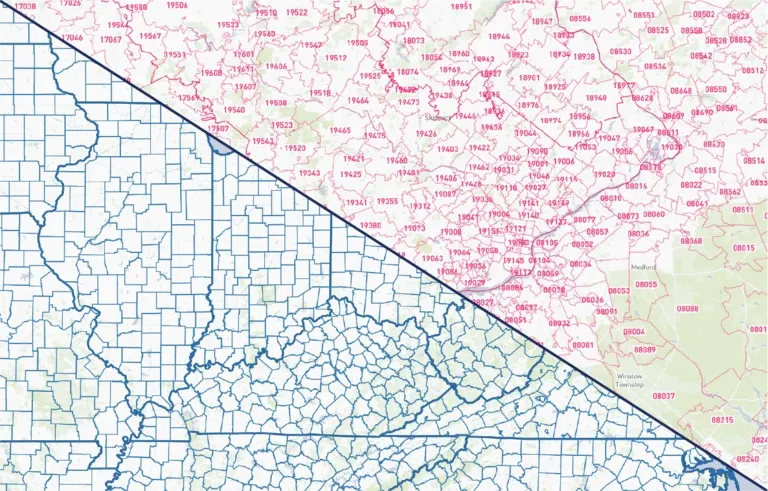
Postal and Administrative Areas for 247 Countries
Coherence and precision at every level
Edge-matched polygons
Our proprietary data-mastering processes guarantee shape accuracy, featuring a topological model and a dedicated algorithm to establish spatial relationships.
- No gaps, nor overlaps
- No duplicate data thanks to mutualized edges
- Clean coastlines and borders
WHY GEOPOSTCODES
High-quality boundary data and unique expertise
Highest quality
- Edge-matched polygons
- Precision at every level
- Proprietary topological model
Unique expertise
- Fast and agile implementation
- Dedicated GIS Expert
- 100+ successful integrations
World coverage
- 247 countries
- Difficult geographies
- Up to 6 levels

Rich attributes
Our boundary data can be enriched with country-specific information, population, multi-language support, UNLOCODE, IATA codes, and time zones.
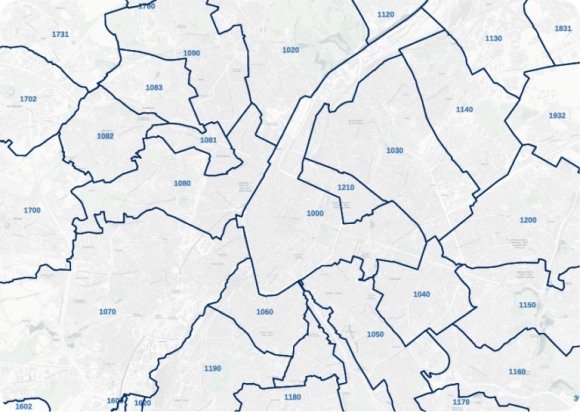
High-precision for spatial analysis
Our high-resolution shapes are put together with up to 1-meter precision, making it perfect for in-depth spatial analysis, clustering, geofencing, and reverse geocoding.
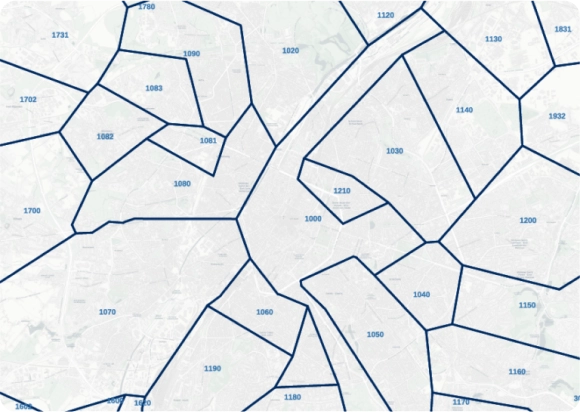
Fast-loading for reporting and BI
Get our lightweight, simplified, yet exhaustive format for a fast rendering. Our proprietary algorithm ensures all entities remain visible and perfectly connected after simplification.
Integrate our polygons seamlessly into your IT systems
- Data available in: Shapefile, GeoJSON, KML, ASC, DAT, CSV, and GML formats
- Available on marketplaces: Esri, Datarade, SAP, DataBricks, Google Cloud
- Get our data on your cloud
- Integrate it into your software of choice

Power your product with our high‑quality polygons
- Fixed yearly pricing
- License tailored to your scope
- Dedicated onboarding included
- Integration within your product allowed
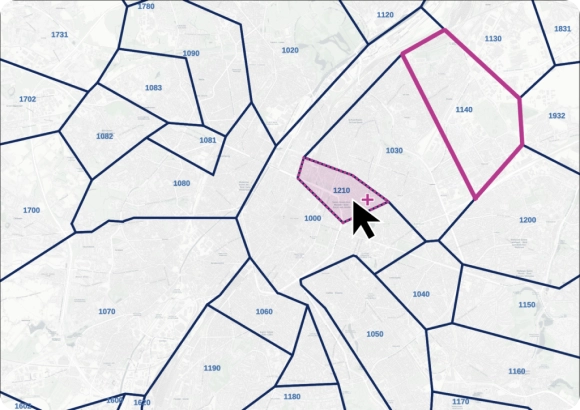
Easy customization
Our on-premise data allows you to group polygons to form custom areas on a map easily. It's particularly interesting for territory mapping purposes.

Fast and agile implementation
A GIS expert, dedicated to your account and committed to your success will ensure a seamless data integration process and an immediate answer to all your questions.
“Having postal boundary visualization works much better for customers than putting things in a table.”
William Chao
Product Owner, Geographic Information Services
“GeoPostcodes allows us to confidently and accurately map zip codes to natural hazard event boundaries”
Dave Hamm
Project Manager
Check our related boundary data articles
Frequently Asked Questions
Creating a zip code boundary map for free can be achieved through various online mapping tools or GIS software offering complimentary versions or trials. These tools empower users to overlay postal code boundaries onto digital maps, providing insights into specific geographic areas delineated by postal codes. While some platforms may have limitations, they still offer valuable resources for individuals and businesses seeking to visualize postal code data. By utilizing a tool for creating zip code boundary map, users can analyze postal address, city limits, and other location-based information effectively for mail delivery logistics, demographic studies, and targeted marketing strategies.
Yes, users can overlay zip code boundary maps onto Google Earth, enhancing the platform’s functionality for geographic analysis and visualization. While the process may vary depending on the mapping software used, many tools offer compatibility with Google Earth, enabling users to import and superimpose zip code boundary data onto the Earth’s surface. This capability expands the utility of Google Earth for various applications, including demographic studies, urban planning, and market research. By overlaying zip code boundaries on Google Earth, users can gain insights into the spatial distribution of postal codes, city limits, and other location-based information across regions in Canada and America.
Boundary data can be found from various sources. For national data, the Census Bureau provides comprehensive boundary data for geographic areas across the United States, including city limits, postal codes, and census tracts. Simply proceed to the data & maps tab on the home page of US Census Bureau to see all the available data. For accurate world boundary data, Geopostcodes is the best provider you can find. Platforms like Google Maps allow users to overlay boundary data onto digital maps, providing valuable insights into spatial relationships and geographic features. Users can pinpoint their current location on the map, search for specific boundaries, and label points of interest for reference.
An example of an administrative boundary is the line that separates the United States and Canada on a map. This boundary is established by legal regulations, determining which laws are applied on each side of the line.
Admin-0 boundaries are the broadest and most fundamental administrative units in a geospatial data hierarchy. They define a country’s borders, marking its sovereignty’s limits.
Our boundary database ensures accuracy between polygons and between layers thanks to our topological model. All our data sets are updated frequently to ensure you get access to the most recent version of the geospatial data. Our outstanding quality comes from more than 10 years of double-checking and cross-referencing official sources.
Our boundary files come in 4 data sets formats (KML, GeoJSON, Shapefiles and Topojson). They can be easily integrated into your platform of choice. Our team will guide your integration process to ensure you get the most accurate spatial data analysis and map visualizations.
Boundaries data is a polygon-based representation of the territory in a map. Our data sets are based on a topological model that ensures adjacent polygons match perfectly at any level of precision.


